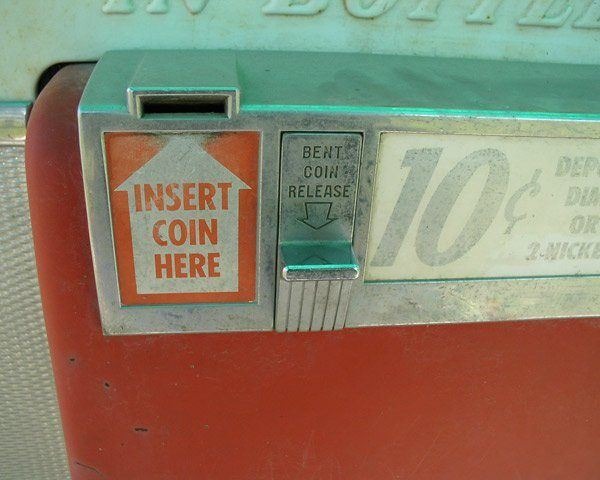The Vending Machine: A History
What is it about the vending machine? We see one, and are immediately drawn to it. Maybe it's the fact that the food and drink safely secured within it is off-limits, making it even more desirable. Maybe the food is so nicely displayed and easily accessible that we impulsively want to sample what's inside. Either way, vending machines are here to stay, and they've been luring us towards them for decades and decades.
Click Here for The Vending Machine: A History Slideshow
The history of the vending machine goes back further than you might think. Scholars believe it dates back to the life and times of the man dubbed Hero of Alexandria, a first-century engineer and mathematician who thoughtfully crafted a machine that dispensed holy water after a coin was inserted. Fast-forward many centuries later and the vending machine as we know it was born: In 1880s England, vending machines were originally created to dispense stamps, postcards, and books.
Today's vending machine is now most commonly associated with food. The first modern vending machine was actually on New York a train platform, where the Thomas Adams Gum Company perfected the art of vending gumballs. The company quickly became known for its quality, and over time gumball machines ended up in stores and on countertops throughout the country.
In the early 1900s in the U.S., the concept of the automat restaurant was born. Joseph Horn and Frank Hardart created the first automat diner in the States, modeling it after a German restaurant named Quisisana Automat. They brought the automat to Philadelphia, then quickly to New York, forever changing how one can easily access food. During wartime in the U.S. the automat was quite popular, filled with comfort food classics like macaroni and cheese that could be served within seconds.
At the same time the automat was coming into vogue, vending machines were evolving. After gumballs, vending companies began selling soft drinks from the large Pepsi-Cola and Coca-Cola conglomerates. Additionally, the Vendorlator Manufacturing Company was born and began mass-producing the machines, cementing their place as a fixture in restaurants and stores throughout the country.
Shortly thereafter, in 1946, the hard-working American was able to get their morning coffee from a vending machine, changing the way people took work breaks and paving the way for other coffee companies to come to market with new products, coffee beans, and machinery. A perfect complement to the coffee break came along in 1950, when refrigerated sandwiches sold out of vending machines arrived. The Tom's Toasted Peanuts and Delicious Sandwich vending machine was quite popular throughout the decade, offering quick bites for people looking to eat something on the go.
The subsequent decades spawned even more vending machines, including the bottled water vending machine and flavored coffee machines. Vendorlator eventually merged with their competitor, the Vendo Company of Kansas City, Mo., to dominate the marketplace.
While vending machine culture still thrives today, the once popular automats lost their luster. In 1991, the last operating automat in New York City closed its doors. In recent years, New York City has felt a bit of nostalgia for the once-loved quick-stop eateries, though: a modern automat, named Bamn!, opened on St. Marks Place several years ago, although it didn't remain in business for very long.
Read on for a more detailed history of the humble vending machine.
